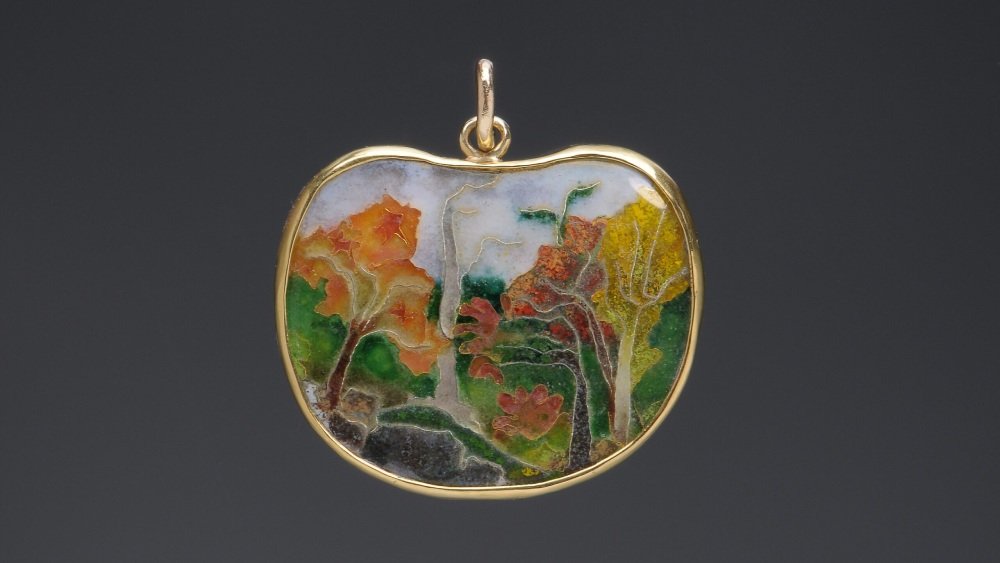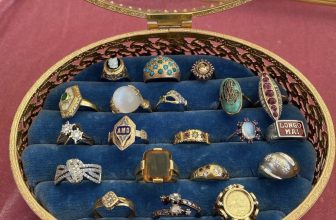
I still remember the first time I saw a piece of cloisonné jewelry. I was wandering through a little antique market in Paris, the kind where every table was overflowing with treasures you didn’t know you needed until you saw them. In the middle of a jumble of trinkets, a small pendant caught my eye — a burst of vivid blues and greens outlined in delicate threads of gold. It was unlike anything I’d ever seen before. The way the colors shimmered when the light touched them felt almost alive. That was my introduction to cloisonné. And it was love at first sight. Back then, I didn’t even know the name for what I was holding. But I knew it was special — and I knew I had to learn everything about it.
What Exactly Is Cloisonné?

Cloisonné is an ancient enamel technique where thin strips of metal usually gold, silver, or copper are carefully shaped into tiny compartments. These compartments are called cloisons, the French word for “partitions.”
Once the design is in place, the compartments are filled with a fine, powdered glass paste. The piece is then fired in a kiln, causing the enamel to melt and fuse into a glossy, glassy surface. The process is repeated multiple times to build up the depth of color, with each firing adding richness and subtlety. Finally, the surface is polished until it gleams like a jewel.
If you’ve ever admired the way sunlight catches the facets of a stained glass window, you’ve experienced the same visual magic cloisonné brings — only here, the canvas is small enough to wear.
A Craft With a Long History

The origins of cloisonné stretch back more than 2,000 years, likely starting in the ancient Near East before traveling through Byzantium and into China along trade routes.
By the 14th century, the Chinese had perfected the art. During the Ming Dynasty (1368–1644), cloisonné became a symbol of imperial wealth. Large vases, intricate incense burners, and exquisite jewelry were created in deep cobalt blues, ruby reds, and emerald greens. These colors weren’t just chosen for beauty — in Chinese culture, they carried symbolic meanings. Blue, for example, represented immortality; red symbolized good fortune.
In Japan, cloisonné — known as shippo-yaki — flourished during the Meiji period (1868–1912). Japanese artisans brought an astonishing level of detail to their work, often creating designs so fine they looked painted rather than partitioned.
My Favorite Cloisonné Find

In my own collection, a few pieces stand out as milestones in my journey.
One is a cloisonné bangle from the late 19th century I found in Kyoto. I’d been browsing a shop no bigger than a walk-in closet when I spotted it, tucked away in a box of odds and ends. The enamel was chipped in a few places, but that only made me love it more. It had lived a life. Every imperfection felt like a chapter in its story.
Another favorite is a small cloisonné snuff bottle from China’s Qing Dynasty. I didn’t buy it — it was far outside my budget — but I still think about it. It had the most intricate design of dragons chasing flaming pearls across a midnight-blue sky. That’s the thing with antiques: sometimes the ones that get away haunt you just as much as the ones you take home.
How to Spot Quality Cloisonné
If you’re new to cloisonné, here are a few of my go-to tips:
- Inspect the cloisons. The metal lines should be neat, clean, and well-shaped. Wobbly or sloppy lines can be a sign of lower quality.
- Check the enamel surface. Antique pieces often have tiny pits or hairline cracks, which is normal with age. Large chips, however, can affect both beauty and value.
- Note the weight. Authentic antique cloisonné often feels solid in the hand due to its metal base.
- Look for patina. A natural softening of the metal over time can indicate age and authenticity.
Cloisonné vs. Modern Jewelry

Modern jewelry tends to focus on precision and efficiency, with machine cut stones, computer-aided designs, and large-scale production. Antique cloisonné, on the other hand, couldn’t be more different. Each piece reflects hours of careful handwork.
And unlike most modern pieces, cloisonné doesn’t fade or tarnish in the same way. The enamel colors can remain vivid for centuries if cared for properly. That’s part of why I believe cloisonné belongs in every serious antique collection — it’s a marriage of beauty and resilience.
Caring for Cloisonné
If you’re lucky enough to own cloisonné, treat it gently:
- Avoid water exposure. Moisture can damage the metal base.
- Clean with a soft, dry cloth. Never use abrasive cleaners or brushes.
- Store separately. Enamel can chip if knocked against harder materials.
I always wrap my cloisonné pieces in soft fabric before placing them in storage. It’s a small step, but it ensures they’ll last for generations.
Why Cloisonné Steals My Heart Every Time
To me, cloisonné is more than just a decorative art form — it’s a conversation between history, craftsmanship, and beauty. When I wear my cloisonné bracelet, I’m not just wearing a piece of jewelry. I’m wearing centuries of tradition, the skill of an unknown artisan, and the whispers of all the places it’s been before it found me.
And that’s the true joy of antiques: you’re not just buying an object. You’re becoming the next chapter in its story.
Final Thoughts
Every time I stumble upon cloisonné, I’m reminded why I fell in love with antiques in the first place. There’s a richness in the colors, a patience in the craftsmanship, and a history woven into every curve of metal and glass. It’s not the kind of beauty you find in a factory-made piece — it’s the kind that’s been shaped by both human hands and the slow passage of time.
To me, the real magic of cloisonné is how it connects you to stories you’ll never fully know. You become part of that chain of ownership, adding your own chapter before passing it on to someone else. And that’s the heart of collecting: not just owning something beautiful, but becoming a custodian of its history.
-Sams
Click “HERE” for more articles







